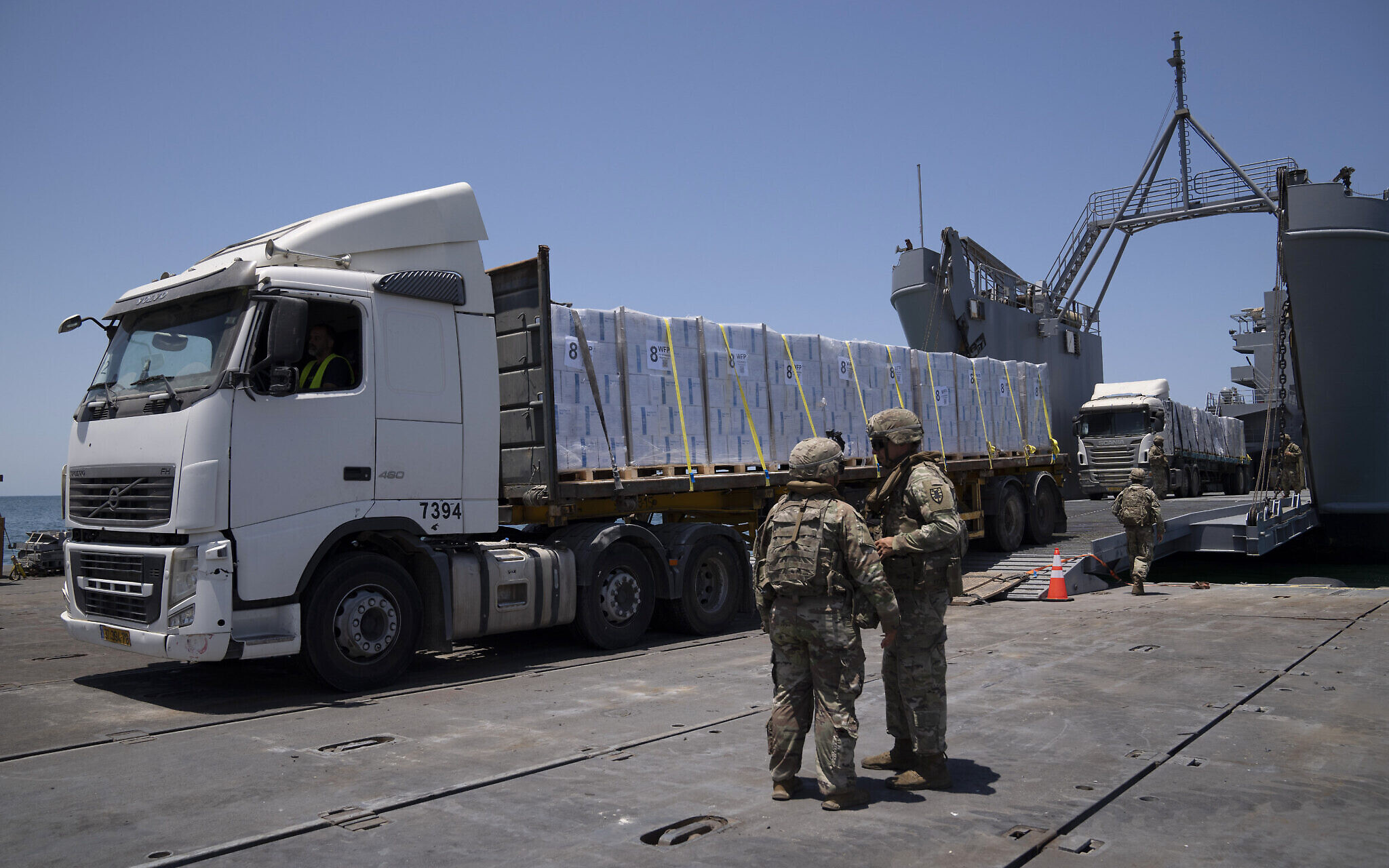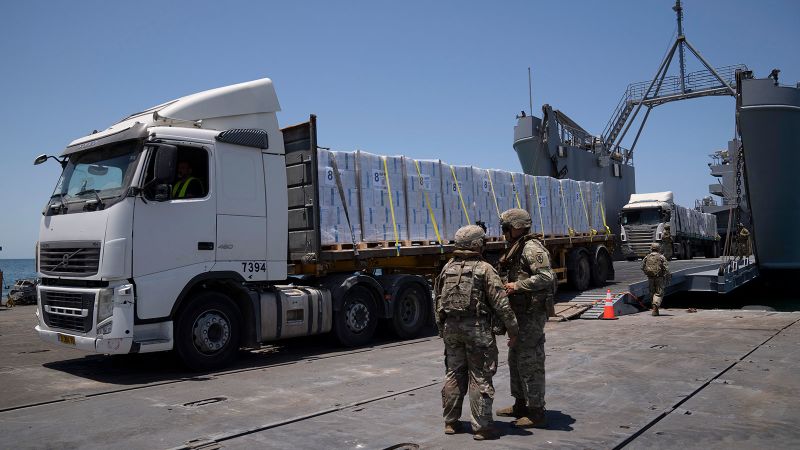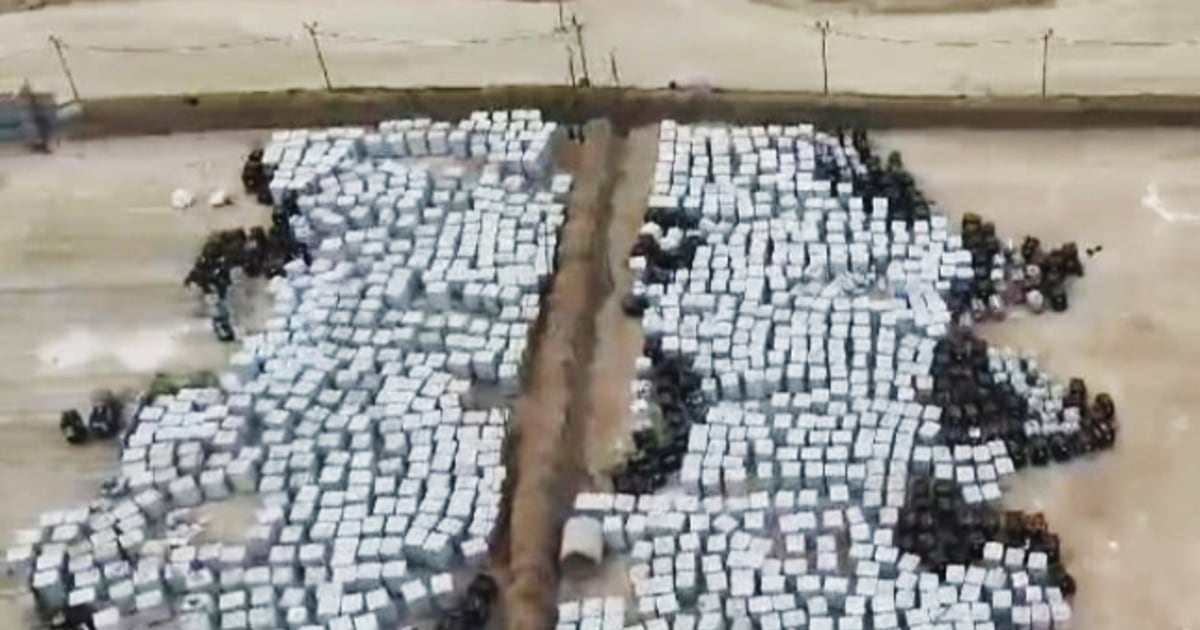
Title: US Pier in Gaza: Aid Delivery Amid Challenges
The United States has been attempting to deliver humanitarian aid to the population of Gaza through a temporary pier system, but the mission has faced numerous challenges since its inception.
Background: The Netzarim corridor, a six-kilometer road in Gaza, is a desolate area with no civilian presence. Israeli military and vehicles are present on this road leading to the hulking steel pier located at its end. This pier was built by the US at a cost of $230m to provide aid to the people of Gaza.
Challenges: The pier, known as Joint Logistics Over The Shore (JLOTS), has faced challenges since its installation in May 2024. It had to be re-anchored twice due to heavy seas and anticipation of more heavy seas. Additionally, the distribution of aid from the pier was halted by the UN due to security concerns on the ground.
Impact: The humanitarian situation in Gaza has grown increasingly dire as a result of ongoing conflict between Israel and Hamas. The war has led to widespread hunger, with border crossings being less productive than sea routes for aid distribution. However, shipments through these crossings face risks from fighting, damaged roads, unexploded ordnance, and Israeli restrictions.
Reviews: In response to these challenges and the need for transparency in the delivery of humanitarian aid to Gaza via the JLOTS pier system, both the Pentagon and USAID Inspectors General have launched coordinated reviews. The DoD IG will focus on DoD's efforts to facilitate aid delivery through the maritime corridor, while USAID IG will assess plans and controls over distribution of aid from the pier.
Conclusion: The US military pier in Gaza has faced numerous challenges since its installation, but it remains a crucial lifeline for delivering much-needed humanitarian aid to the population. The ongoing reviews by the Pentagon and USAID Inspectors General will provide valuable insight into optimizing oversight and ensuring efficient delivery of aid to those in need.







